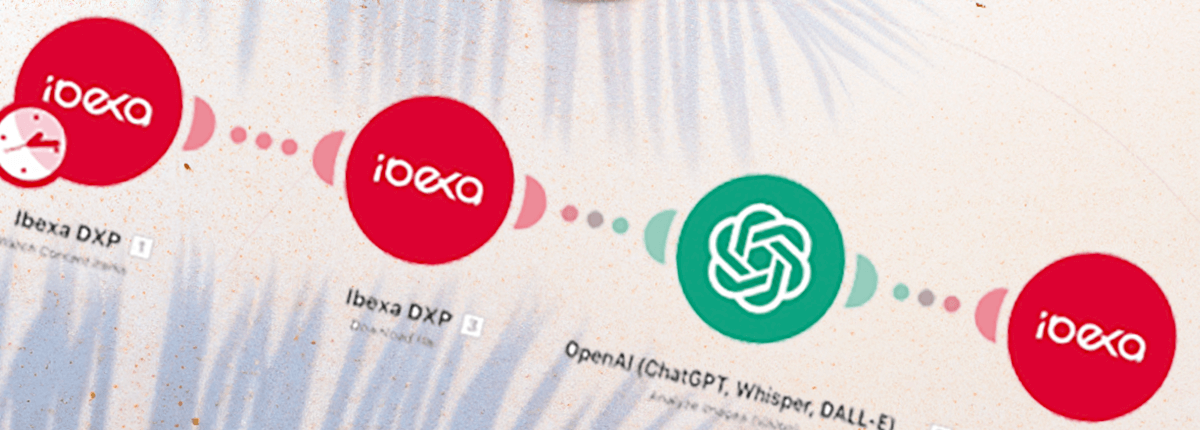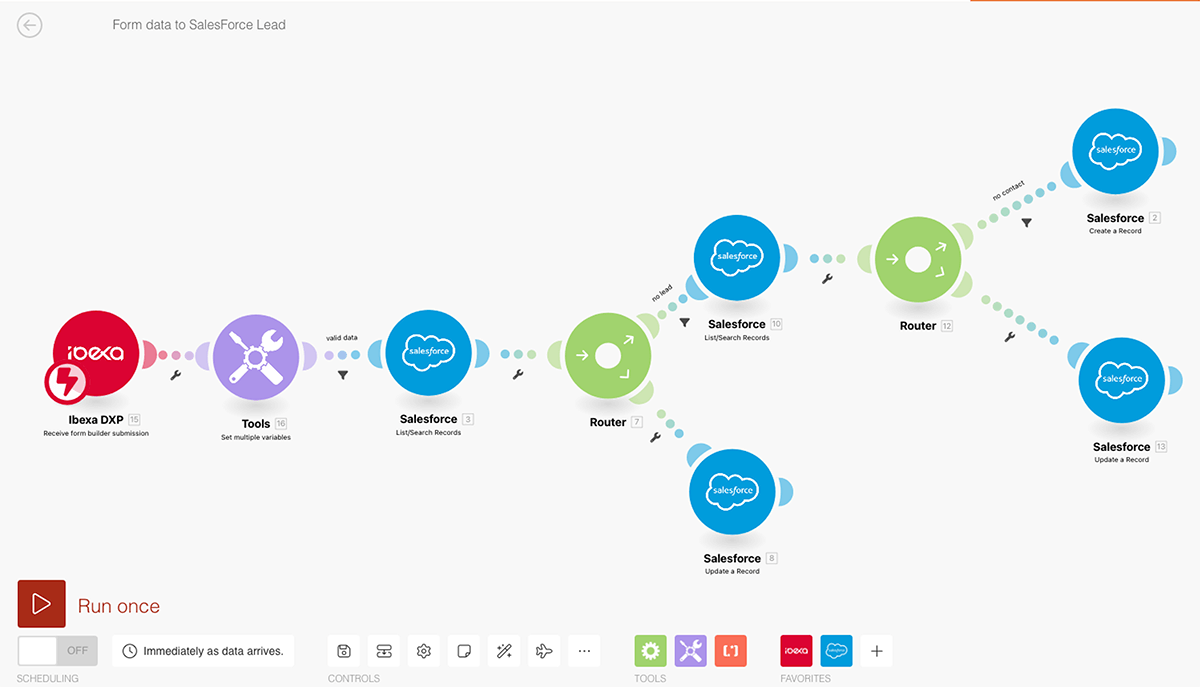Enhancing Web Accessibility with Automated ALT Tags Using QNTM Connect and AI
Web accessibility is a crucial element of maintaining an inclusive and effective online presence. One common pain point for marketers and content creators is the omission of ALT tags for images. This issue can significantly impact both accessibility and SEO. Despite their importance, ALT tags are often overlooked during the content creation process, leading to several detrimental effects, which we discuss in this article.
Understanding QNTM Connect (formerly Ibexa Connect)
Before we jump into the article, I’d like to briefly introduce QNTM Connect and what it is. QNTM Connect is an Integration Platform as a Service (iPaaS) solution designed to automate complex business processes and integrate various applications effortlessly. It features a user-friendly drag-and-drop interface that allows users to create automated workflows without extensive coding knowledge. By integrating with over 1,300 apps, including CRM systems, ERPs, marketing tools, and AI Tools such as ChatGPT, QNTM Connect enables businesses to streamline operations and enhance digital experiences.
Accessibility Impacts
Screen readers rely on ALT tags to describe images, allowing visually impaired users to understand the visual elements of a webpage. Without these descriptions, important information conveyed through images can be entirely lost, leading to a frustrating and incomplete browsing experience for these users. Ensuring that images have descriptive ALT tags is not just about compliance with legal standards such as the Web Content Accessibility Guidelines (WCAG) but also about fostering an inclusive digital environment where all users can access and benefit from the content created on your site.
SEO Impacts
From an SEO perspective, images without ALT tags cannot be indexed properly by search engines. ALT tags play a critical role in helping search engines understand the content of images, which in turn affects how the images and the associated web pages are ranked in search results. Given that image search has increased significantly over the years, particularly when it comes to product related searches in B2C, properly used ALT tags can improve a website's visibility on search engines by providing additional context and keywords that can be indexed. This enhanced visibility can lead to higher search rankings, increased web traffic, and better overall performance in search engine results. Without ALT tags, a significant opportunity for optimizing search engine performance is lost, potentially leading to lower search rankings and reduced visibility for the website. If you’re focused on ecommerce (whether B2C or B2B), this can also mean missed opportunities in not having your product image ranking in image search results.
Automating ALT Tag Creation with QNTM Connect and ChatGPT
By leveraging QNTM Connect's integration capabilities with ChatGPT, marketers can automate the generation of descriptive ALT tags for images. Here's how this can be achieved:
- Connect Ibexa DXP and configure it to watch for new images. Note that in Ibexa DXP images are created as objects that can be reused, for each of those the alt text is generated only once.
- Download the file from Ibexa DXP to QNTM Connect. The iPaaS needs local access to some files, so this is a way to get files from the internet to the local scope.
- Generate an alt text using OpenAI. The image is passed to the OpenAI backend along with instructions (known as a prompt). The prompt needs to be very explicit, describing the style, length and words to avoid in the alt text.
- Update the original image element with the text from the OpenAI response. The reference of the created image is available from the first step so you can use it directly for the update.
The video below gives a brief overview on setting this workflow up inside of QNTM Connect:
Benefits of Automating ALT Text creation
Implementing this automated solution offers several benefits:
- Enhanced Accessibility: Ensures all images are accessible to visually impaired users, improving user experience.
- Improved SEO: Boosts search engine rankings by providing search engines with accurate descriptions of image content.
- Efficiency: Saves time and reduces the manual effort required to write ALT tags for each image.
- Consistency: Maintains a uniform standard for ALT text across all images on the website.
- Error Reduction: Minimizes the risk of human error in manually writing and inserting ALT tags.
- Scalability: Easily scalable to handle large volumes of images, which is particularly beneficial for content-heavy websites and e-commerce platforms.
- Compliance: Helps ensure compliance with web accessibility standards and regulations, potentially avoiding legal issues and improving the site’s overall inclusivity.
With QNTM Connect’s powerful automation capabilities and the integration with ChatGPT, businesses can ensure that their web content is fully accessible and optimized without the need for extensive manual input. This not only enhances user experience but also contributes to better compliance with accessibility standards and improved search engine performance.
By adopting QNTM Connect with Ibexa DXP, organisations can automate tedious tasks, reduce errors, and focus on creating compelling digital experiences.
Going Further with QNTM Connect
The scenario outlined above is just one of many that can be automated with QNTM Connect. with over 1300+ App connectors available, there are no limits to the level of automation you can achieve with little to no code. Whether it is a simple sync between Ibexa and your favourite email marketing tool of something more complex with integrations to multiple systems at the same time, QNTM Connect has you covered.


